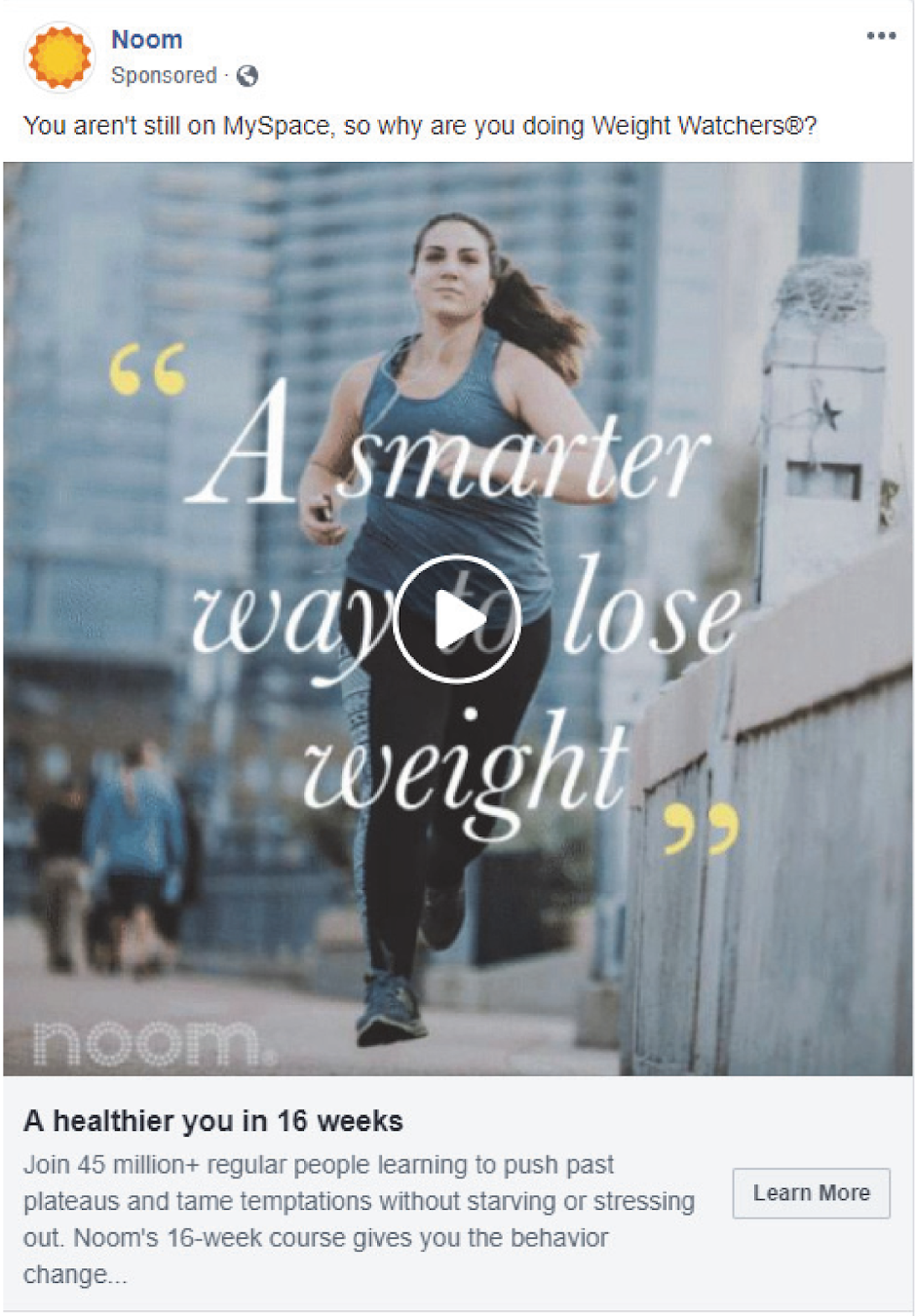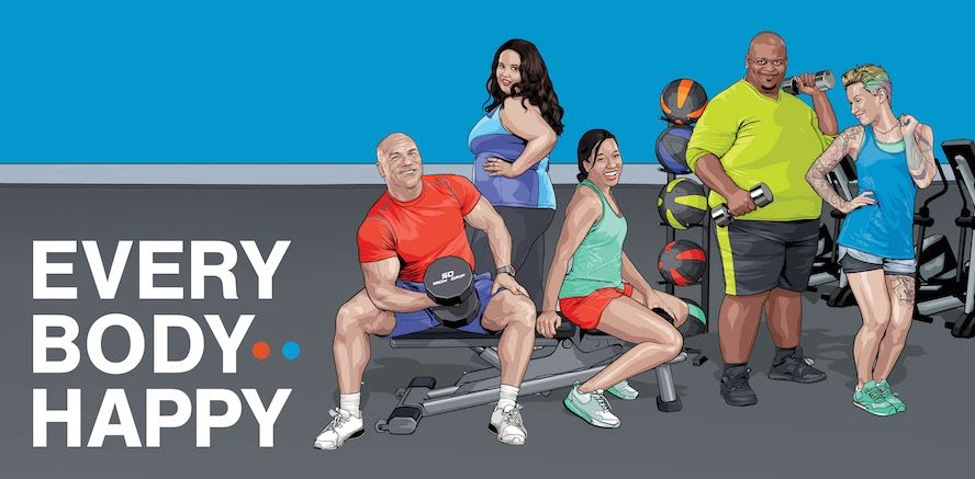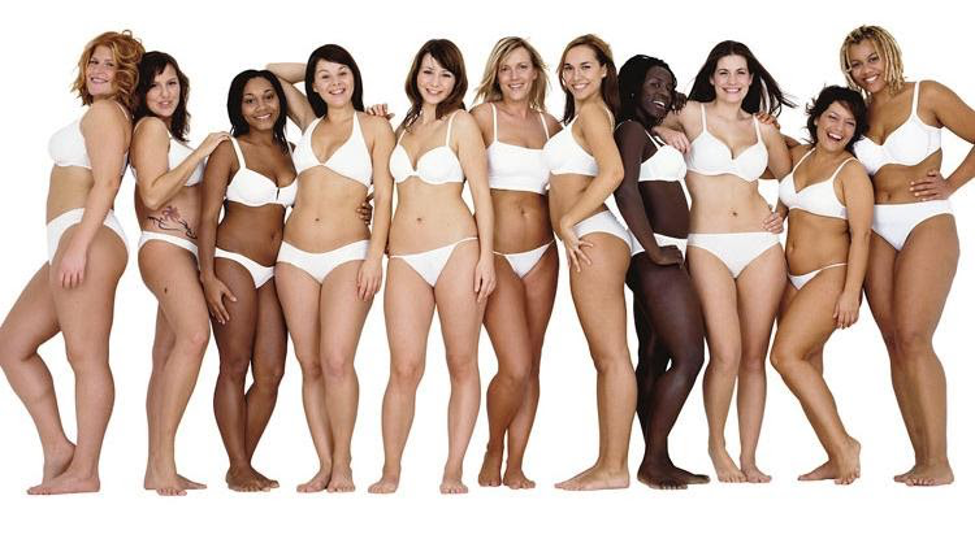Weight loss advertising is a social media staple. You likely can’t scroll through your feed without seeing such an ad. The wild part: fewer consumers are actively looking for diet and weight loss help.
The percentage of Americans looking to lose weight has dropped to 49% — due, in part, to the body acceptance movement. In addition, the diet and weight loss industry is one of the fastest-growing and most profitable markets. To stand out, it’s important to focus on effective weight loss advertising. Rather than wasting ad spend on before and after photos, earn the trust of consumers in this competitive space by embracing body wellness and honest data.
Embrace body positivity & wellness
Many outdated advertising methods for weight loss products focus on how many pounds you can lose or how many inches you can shave off. These weight loss ads often feature before and after photos of people, showing their dramatic change with slogans like, "You can do this too!"
However, modern consumers don't want to be shamed into losing weight or discouraged about how they look. They want a brand that makes them feel good about themselves and encourages them to feel better — the body positivity movement.
For example, instead of before and after photos, Noom appeals to the emotional side by creating ads featuring statements like “A healthier you in 16 weeks” paired with pictures of empowered, action-oriented people. Focusing ads in this way uses good feelings rather than shaming to channel the body positivity movement. As Jami Oetting, director of editorial strategy at HubSpot, said, “...people rely on emotions, rather than information, to make brand decisions...”
Many companies in the weight loss industry have yet to trend away from perceptively body-shaming with before and after photos. This leaves a gap where you can jump in and lead in advertising campaigns. Start by A/B testing your new ideas. For marketers, one potential A/B test idea includes listening to call recordings to learn what specific language your clients are using and testing that on your site!
Show honest and vetted data
Most weight loss advertisements utilize extreme results that feature huge numbers. Overall, this tactic can actually contribute to consumer and social distrust, as consumers know when they're being fooled by ads. That’s why it’s important to be honest with the data and stats you're showing.
In addition, social platforms are cracking down on fraudulent or perceived fraudulent ads in the weight loss industry. Yet, how their advertising platforms classify "fraudulent" is foggy at best. For example, TikTok recently banned "harmful ads."
For a long time, ads and clips showed people touting unhealthy weight loss results via unhealthy or questionable weight loss methods. As a result, TikTok partnered with the National Eating Disorder Association and released a new policy to help fight harmful imagery in weight loss advertising and trends. However, the actual policy is vague, so weight loss companies must be extra careful about anything that could be perceived or taken the wrong way in their ads.
Ads that feature huge claims for pounds and inches lost often leave the consumer feeling disappointed when their own experience doesn’t align. When creating new weight loss advertisements that align with realistic numbers, there are some best practices you can engage in.
Use inclusive imagery
If you've seen an advertisement recently, then there's one thing that might have stood out — real people. More and more brands utilize inclusive imagery through the use of "real" models or actual customers. Because people love the “real people, not paid actors” method of advertising, you can actually see better results. For example, Dove’s “real beauty” campaign has worked for more than 10 years. They use people of all shapes and sizes — making the ad believable and enabling consumers to feel like they are part of the experience.
However, in weight loss advertising, you seldom see the real people still using the product. Blink Fitness, one of the few to choose this method in the weight loss industry, has said it will feature real members in its ads, not actors who are in shape. Why are big brands doing this? Evidence shows it works. A study conducted at the University of St. Gallen showed that advertisements with real people were more effective as they felt like "neighbors" you could compete with rather than the "rich and famous" that you could not.
Showcase testimonials from real customers, not superstars
Testimonials are one of the most loved types of social proof. That’s why 72% of consumers think positive testimonials and reviews increase trust, and 88% of consumers think testimonials are just as good as recommendations from friends and family. Furthermore, Nielsen also found that 70% of consumers trust testimonials and reviews from strangers. By allowing real customers to talk about your product, prospective customers can learn to trust you.
Altogether, testimonials are gold for weight loss advertising, whether used in case studies, flyers, landing pages, or simple image ads on social media. Remember, it's important to use testimonials that the prospective customer can check, such as comments on social media or reviews left on Google or Facebook pages. Finally, make sure you know how to obtain honest reviews, as testimonials that can't be checked can appear "made up" or "false."
Encourage repeat purchases with a funnel-based approach
When talking about funnels, Wix states, “As a business, your success does not only depend on the quality of your offering but also on the way in which it’s presented.” That’s to say, using a funnel-based approach enables you to cohesively present the product across multiple phases of the customer's journey and gently guide the potential customer to purchase it.
If completely successful, it will guide them to become repeat customers — something that many argue is more important than one-time buyers. Repeat customers are actually more important for business success. Sixty-one percent of SMBs reported to BIAKelsey that over 50% of their revenue was from repeat customers.
For example, you set up a weight loss ad to reach potential customers. From there, you guide them to a landing page and collect email information, show them your product, and help them become paying customers. Eventually, you send emails about a new product. Now you’ve found potential customers and turned them into repeat customers.
Lead the way in weight loss advertising
Your weight loss program needs to stand out to your target audience in ways that simple before and after photos don’t. Utilize full-funnel, body-positive, realistic testimonials, and you’ll see more conversions, better ROI, and increased customer satisfaction.
Looking for help with your new marketing campaign? CallRail’s 14-day trial will reveal which ads, keywords, and campaigns are working — and which aren’t. Try CallRail to obtain Call Tracking and Form Tracking today. We will help you follow each step of your prospect's journey.









